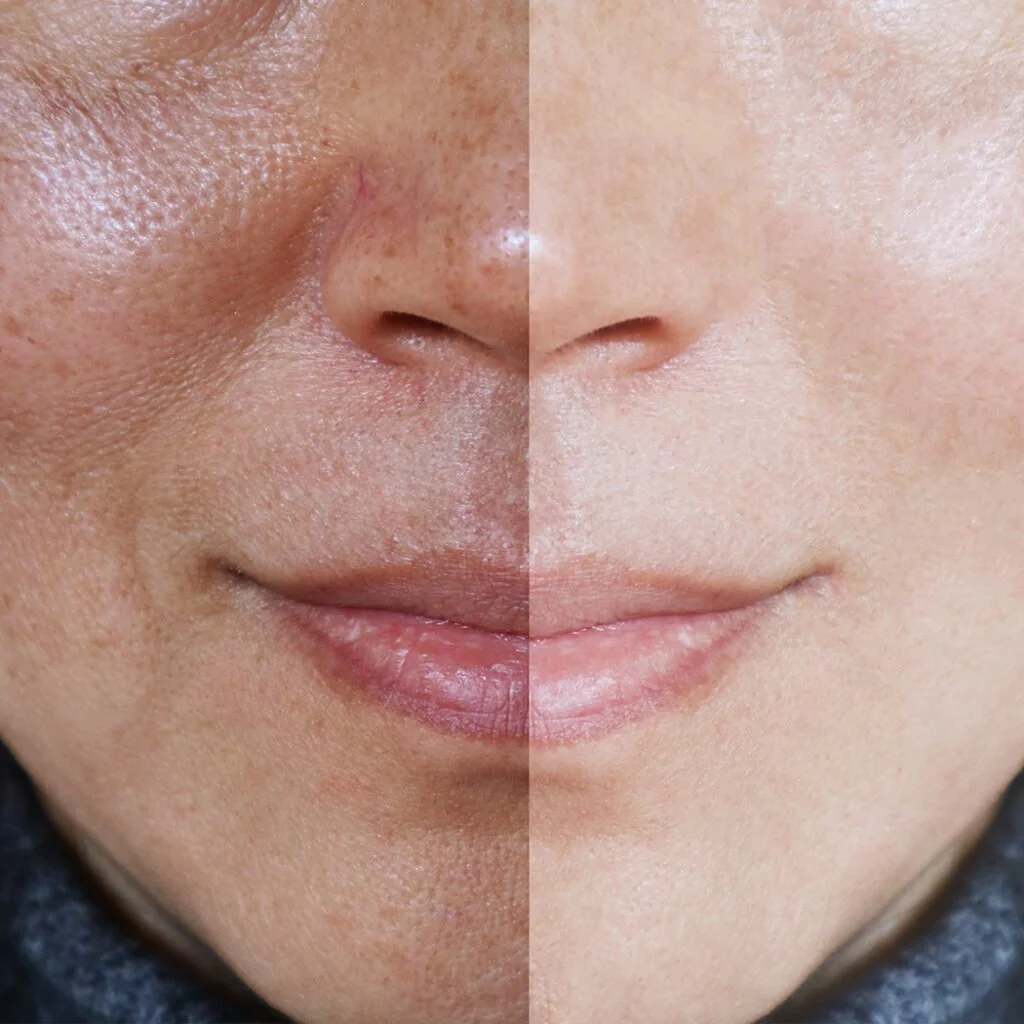Melasma 101
Melasma… sigh.
If you suffer from melasma you’ll know what I mean. Melasma is a hyper-pigmentation skin condition that is annoyingly chronic and difficult to treat. It strikes mostly women starting in their 20’s or 30‘s and it’s a life long struggle to control.
It’s a tough one! Melasma is also difficult to diagnose and resistant to many treatments typically used for pigmentation and sun spots. It’s can be made worse with common sun spot treatments like IPL or BBL.
So today I’m offering Melasma 101 because at ArtMed we believe the first step towards treating a complex dermatological condition is understanding it.
Melasma – What and why?
Melasma is a chronic hyper-pigmentation disorder that causes excess brown pigment to be deposited in the skin by your colour producing cells – melanocytes. For sufferers, it tends to show up in your 20’s or 30’s and 90% of patients are women. Melasma often masquerades as straight forward sun spots. But it is not your typical sun damage. Melasma leads to large areas of pigment on sun exposed areas of the face – the top of cheeks, above the eyebrows, on the forehead, the bridge of the nose, the upper lip and chin. Occasionally it will also cause brown spots on the inner aspect of forearms and the neck.
It is more common in individuals with skin type 3 or 4 (light to medium brown) but can affect all skin types. It is very rare before puberty.
There are many factors that contribute towards melasma including:
hormones
pregnancy
birth control pills
50% of sufferers have genetic factors (runs in their family)
medications (anticonvulsants and phototoxic drugs)
heat and sun exposure
Hormones stimulate melanocytes to produce excess pigment. Thus high hormone conditions (pregnancy, birth control pills) can stimulate pigment formation. This is the classic ‘mask of pregnancy’ and if you developed that mask while pregnant it is likely you also have melasma. Both estrogen and progesterone are thought to trigger melanocytes but especially progesterone. The heat of the sun also stimulates pigment formation and the ionizing radiation of the sun leads to inflammation which triggers melanocytes too (many people will note pigmentation after an injury such as acne or burns). Vasodilation of blood vessels is associated with inflammation which further increases heat in the skin thus triggering melanocytes even more.
THIS IS IMPORTANT!!
There are 2 layers of pigment – melanin is found in keratin cells of the epidermis AND in macrophages within the dermis which is much deeper. Macrophages are like the vacuum cleaner cells of the dermis – when pigment is pumped out by melanocytes the macrophages gobble it up and effectively hold large lakes of pigment in giant cells.
This means you have to target both the superficial and deep layer of pigmentation to effect a good result from treatment.
As you can imagine, treatment of melasma is multifactorial and often complex.
So what’s a person to do?
1) First, visit a skin care professional with experience diagnosing and treating melasma. A missed diagnosis can be bad news as the wrong treatment can make matters worse. VISIA skin analysis is useful. Sometimes the hyper-pigmentation can be subtle and the pattern difficult to see with the naked eye. VISIA can reveal pigment changes and patterns of pigment more effectively than the naked eye and can greatly assist with diagnosis.
2) Second is AVOIDANCE. Don’t stimulate melanocytes unnecessarily. This means: Sunblock and Sun Avoidance – use UVA/UVB full spectrum mineral sunblock (longer wavelengths in UVA especially stimulate melanocytes so you need full UVA coverage). Avoid heat triggers – avoid excessively hot exercise or activities in hot environments, hot overhead lights, cooking over hot stove/ BBQ/, SAD lights, heat lamps, hair dryers, hot yoga and yes, hot tubs/saunas. Avoid BBL/IPL – why? heat stimulates pigment formation; the broad spectrum light of IPL/BBL will stimulate new pigment therefore causing REBOUND; IPL/BBL doesn’t reach the deep dermal layer where stubborn pigment resides.
3) Third is treatment. The basis of treatment is to both remove existing superficial and deep pigment and prevent future pigment formation. Removing pigment can be done in various way.
Retinols/Retinoids -turn over keratin layer to remove superficial pigment found there
Chemical Exfoliants – AHA and BHA creams and lotions to remove upper keratin layer pigment as well
Dermamelan – proprietary intense depigmentation treatment system containing brightening, exfoliating and antioxidant agents; leads to significant peel; requires ongoing treatment with cream; great for melasma in skin types 3-4 who are also prone to inflammatory pigmentation; removes superficial and deep pigment
Chemical peels – gentle and frequents peels for faster removal of keratin level pigmentation (pretreatment with hydroquinone and retinol recommended)
Laser – can reach deeper dermal level pigmentation; however, it is extremely important to use the correct laser with the correct settings; laser is still hot but with specific wavelengths at lower heat settings laser is effective at reaching stubborn deep pigment
PERMEA clear and brilliant – non-ablative; gentle exfoliation; reaches deeper into dermis to destroy and remove dermal macrophages full of pigment; low heat, monthly for 4-6 treatments; minimal to no down-time
HALO – non-ablative mode only (ie not HALO-PRO); HALO goes deeper yet; need skilled operator who knows proper settings; 4-5 days of downtime
4) Fourth is prevention. Certain prescription medications and pharmaceutical grade skin care products alone or in combination can effectively prevent the formation of pigment.
Hydroquinone 2% – this prescription topical agent blocks an enzyme involved in producing pigment; with HQ2% treatment you must cycle on for 6 months and off for 6 months to optimize results and prevent HQ resistance
Vivier Hyperpigmentation Kit – pharmaceutical skin care company Vivier has assembled a complete system for hyperpigmentation which includes 2% HQ serum and topical HQ 2% cream,1% retinol cream, topical exfoliants, SPF 45 sunblock and salicylic acid wash; great value and excellent results, sometimes referred to as ‘laser in a bag’
Emerging treatments
As I said earlier, about 50% of melasma sufferers report a family history. Among those who do not have a family history it is often observed that their melasma has a later age onset and is more difficult to treat. This type of melasma may be more dominantly related to vasodilation/ inflammation. Tranexamic acid (a derivative of lysine) is an oral or topical medication that slows melanin production and particularly reduces redness that is sometimes associated with the brown pigmentation in non-familiar melasma. Studies are ongoing but this treatment is showing promise and hopefully will provide an additional option in the future.
As I mentioned in the beginning of this blog, melasma is difficult and it’s a masquerader. If you suffer from this condition or think that you might, be sure to consult with qualified medical practitioners for proper diagnosis and effective treatment options.
At ArtMed we deal with melasma daily. Everything mentioned in this blog is available at ArtMed including VISIA skin analysis. So if melasma is getting you down, schedule a consultation with us and until then, wear your sunblock!!

